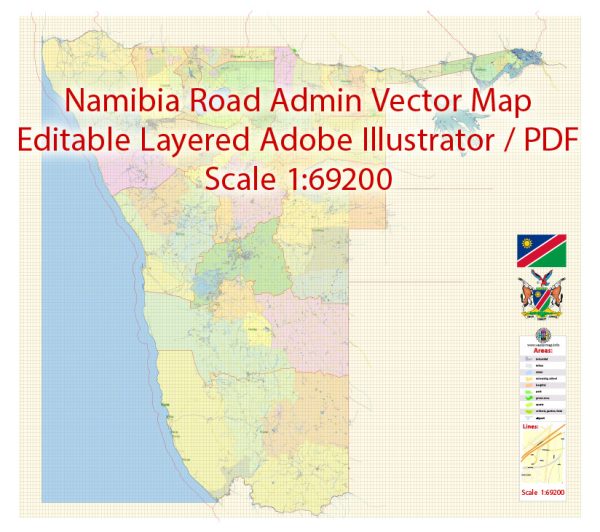Namibia’s history of urban development is shaped by its unique geopolitical and historical context. Prior to colonial influence, Namibia was inhabited by various indigenous groups, including the San, Damara, and Herero people. The arrival of European powers, particularly German and later South African colonization, significantly impacted the urban landscape.
- German Colonial Period (1884-1915): The late 19th century saw German colonization, and Windhoek, the present capital of Namibia, became a focal point. The Germans established Windhoek as a central administrative and economic hub. The city’s architecture from this period still reflects some of the German influence.
- South African Administration (1915-1990): After World War I, South Africa took control of Namibia, then known as South West Africa, as a League of Nations mandate. Urban development during this period was marked by racial segregation policies, particularly the implementation of apartheid. Windhoek, like other urban centers, experienced segregation, with distinct areas allocated for different racial groups.
- Independence (1990 Onwards): Namibia gained independence from South Africa in 1990. Post-independence, efforts were made to address historical inequalities and promote inclusive urban development. The government focused on providing basic services, infrastructure, and housing for all citizens. However, challenges such as rapid urbanization, informal settlements, and economic disparities persisted.
- Urbanization and Informal Settlements: Rapid urbanization has been a prominent feature in Namibia’s post-independence era. Migration from rural to urban areas has led to the growth of informal settlements around major cities. Windhoek, in particular, has witnessed expansion and the development of informal settlements on the outskirts.
- Infrastructure Development: The Namibian government has invested in infrastructure projects to support urban development. This includes improvements in transportation, water supply, sanitation, and other essential services. However, disparities between urban and rural areas remain a challenge.
- Economic Factors: Urban development in Namibia is closely tied to the country’s economic activities. Mining, agriculture, and tourism play significant roles in shaping the urban landscape, with cities serving as centers for commerce and administration.
- Challenges and Future Outlook: Namibia faces ongoing challenges in terms of housing, sanitation, and access to basic services in urban areas. The government continues to work on addressing these issues and promoting sustainable urban development. Strategies include urban planning, land reform, and social programs aimed at improving the quality of life for all citizens.
Namibia’s history of urban development reflects the complex interplay of colonial legacies, post-independence challenges, and ongoing efforts to create inclusive and sustainable urban spaces.


 Author: Kirill Shrayber, Ph.D.
Author: Kirill Shrayber, Ph.D.